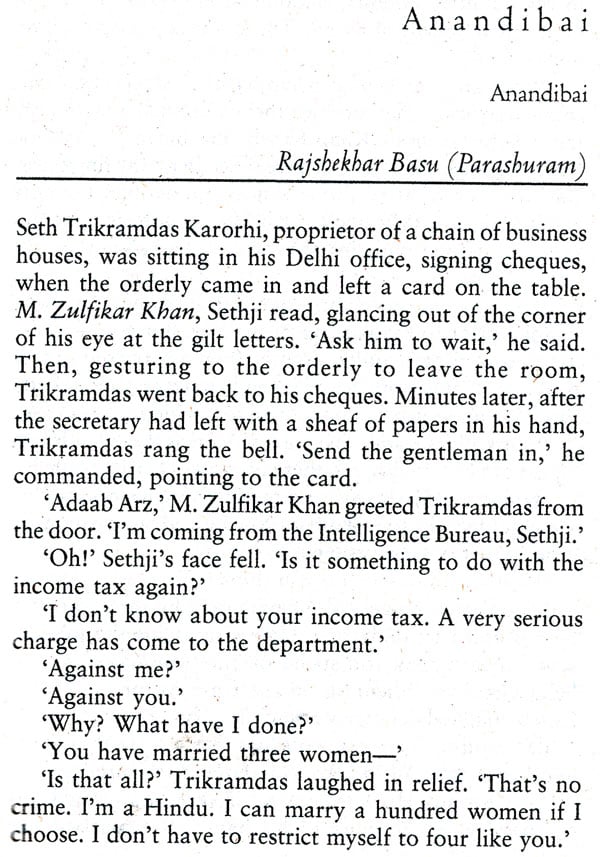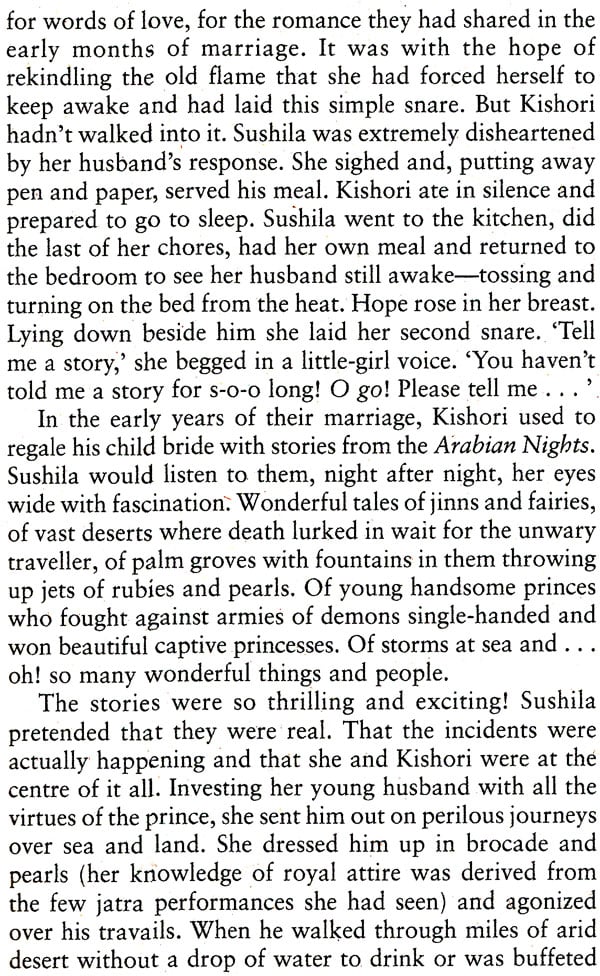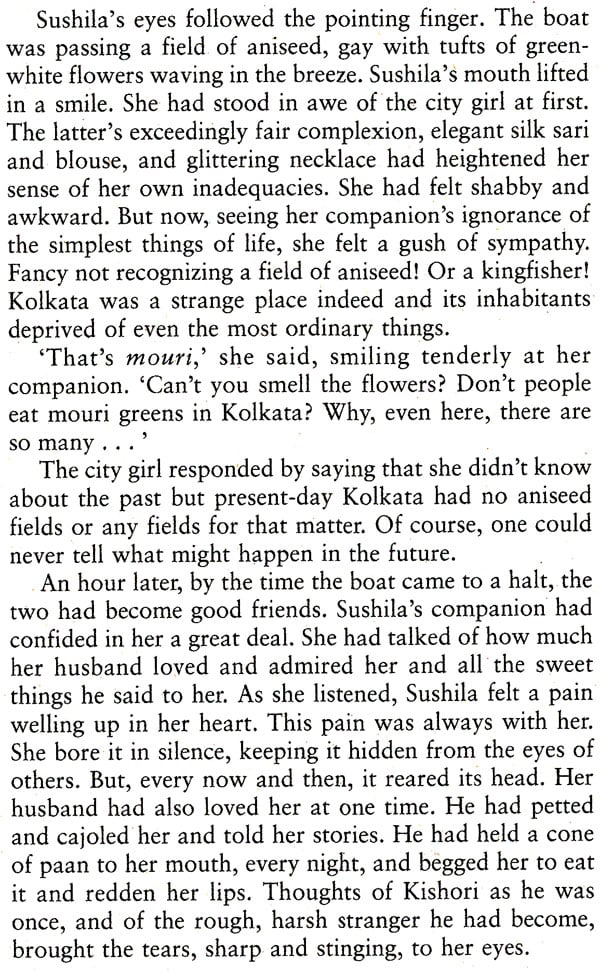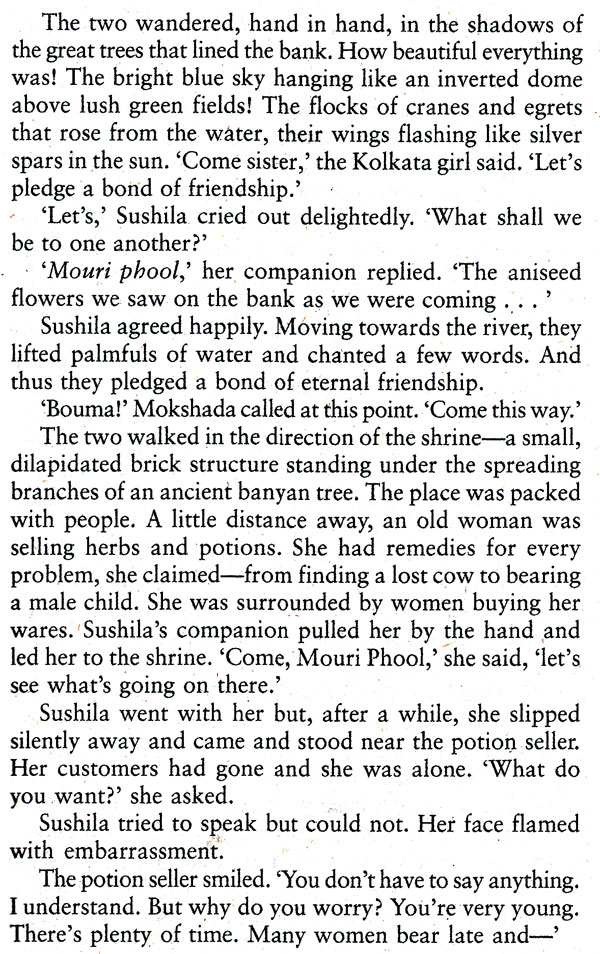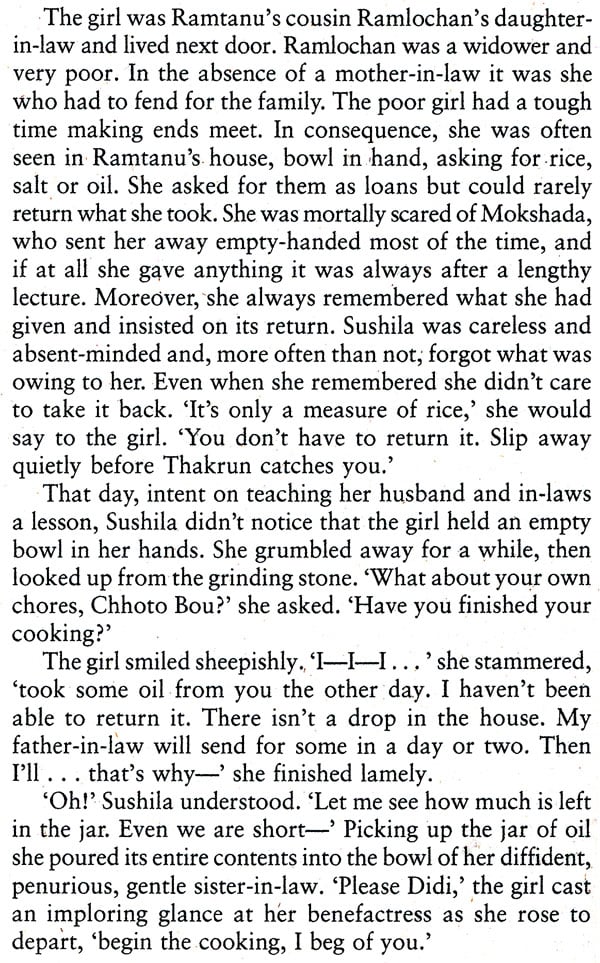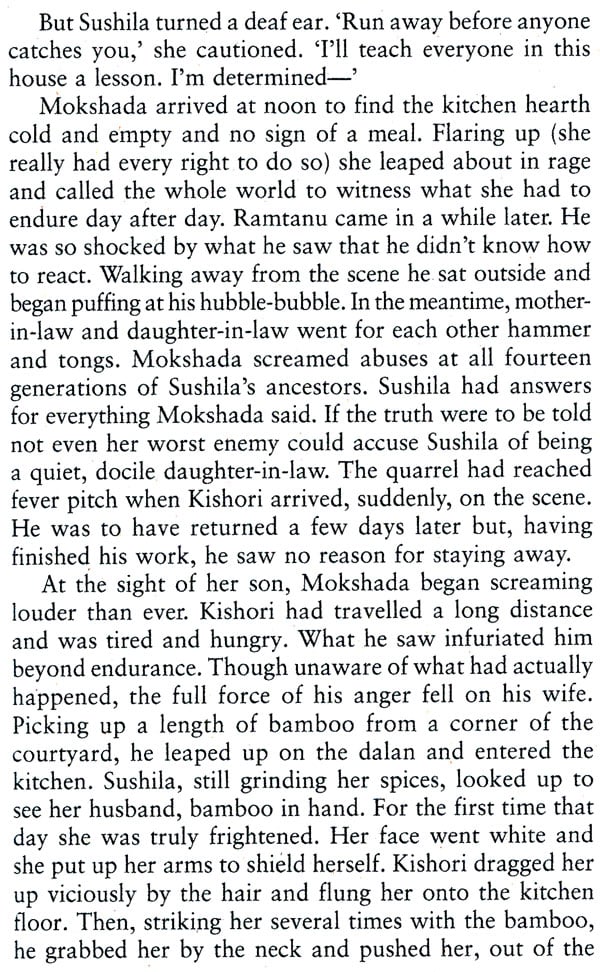
The Way Home (Contemporary Bengali Short Fiction)
Book Specification
| Item Code: | NAQ857 |
| Author: | Aruna Chakravarti |
| Publisher: | Penguin Books India Pvt. Ltd. |
| Language: | English |
| Edition: | 2006 |
| ISBN: | 9780144001064 |
| Pages: | 303 |
| Cover: | PAPERBACK |
| Other Details | 8.00 X 5.00 inch |
| Weight | 220 gm |
Book Description
A selection of fourteen classic short stories from Bengal
The Way Horne brings together in one volume fourteen stories representing the very best of contemporary Bengali short fiction.
Showcasing some of Bengal's finest writers at their creative best-Bibhuti Bhushan Bandopadhyay and Rajshekhar Basu, Sirshendu Mukhopadhyay and Ashapurna Devi-these stories deal with a myriad human themes that are at once individual and universal. From 'The Brahmin', Tarashankar Bandopadhyay's treatise on greed, gluttony and tragic human experience, to 'The Fugitive and the Stalkers', Sunil Gangopadhyay's trenchant tale of violence and retribution set in the days of the Naxal movement in Bengal, from Samaresh Basu's harrowing look at poverty and its degrading effect in 'The Crossing' to Narendranath Mitra's lyrical take on the impact of triple talaq on Muslim women in 'Sap', the collection evokes different lifestyles while reflecting problems and issues with which we can all identify.
Sensitively translated, the stories in The Way Home effortlessly convey the lyricism and imagery of the originals while providing a riveting insight into the works of acknowledged masters of the genre.
A translation is an attempt at communication on behalf of a culture, a tradition and a literature. The choice of authors and, more precisely, the most significant areas of their work are the first steps towards this communication, for translation must be a valid exercise. The choice of a target language is equally important, for the wider its usage the larger the scope of transmission. The use of certain languages as filters also raises questions of power and hierarchy. For example, when a work from one of the regional languages of India is translated into English it becomes the representation of a small provincial culture for a powerful international culture. It is from judicious exercising of such choices that national, even regional themes and ideas become international ones.
The operation, however, is fraught with difficulty. The more divergent the two literary traditions and the wider the gap in space and time, the greater the skill required to bring them together in a meaningful way. A writer, revered in her own country, is tested through a translation by people who judge by an altogether different set of assumptions. If the translator fails to speak forcefully and meaningfully across the language barrier she is doing her writer a serious disservice.
Beauty and Fidelity. These are the twin ideals the translator is chasing; swinging sometimes this way, sometimes that. The golden mean, the exquisite harmony in which the strands are woven so lightly and easily that they raise no dust, is the committed translator's El Dorado-forever sought; forever elusive.
There is another dimension to the attempt. The very act of translation entails the filtering of image and idea from one sensibility to another, raising questions of race, sex, religion and personal history. Translation, with its deep racial, cultural and gender implications, serves as a measure of the growth of a language and the extent of domination of one language over another. At another level, the very process of transference reconstructs cultural identity and reframes the boundaries of language, idea and perception, thus changing the terms of affiliation. How much of oneself can the translator allow to seep into her work? How much shall she guard against? A translator of today working on a nineteenth-century Bengali classic, for example, may, quite unconsciously, orient it to the expectations of a present-day international readership. A woman, translating the work of a male author, may find herself giving it a gender slant. In both cases the shifts may proceed from natural human impulses and not from deliberate choice or premeditation. Should this be seen as a betrayal? Or as the expected consequence of the filtering of images and ideas from one sensibility to another ?
**Contents and Sample Pages**


